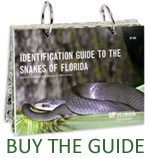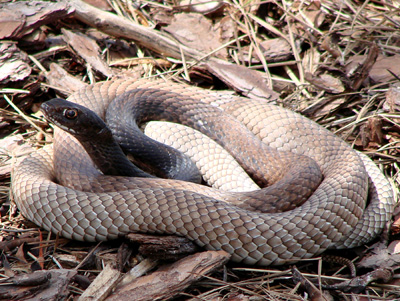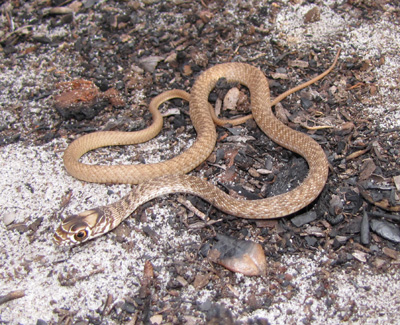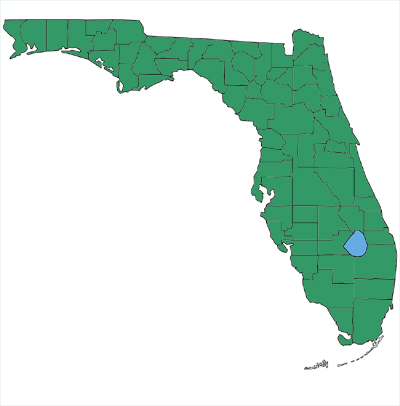Florida's Snakes

Coachwhip
(Coluber [formerly Masticophis] flagellum)NON-VENOMOUS

Solid-colored
Coachwhip - adult (upper photo) and juvenile (lower photo)


Photos by Nancy West (UF, upper photo) and Dr Steve A. Johnson (UF, lower photo). These photos may not be used for any purpose without the express written permission of the photographer.
Size:
Usually 4–6 ft. (max. ~8.5 ft.)
Identification:
Head and upper body are dark olive, brown, or black, fading to lighter brown or tan toward the tail. Lighter areas may be marked with faint crossbands, especially in juveniles. Some individuals may be solid black or tan. Tail is long and thin and appears braided, hence the name Coachwhip. It is sometimes confused with Pinesnakes but usually has a distinct two-tone coloration and lacks the large, triangular scale on the tip of the snout. Scales are smooth. This snake lays eggs.
Habitats:
Found throughout Florida in a variety of habitats, especially in flatwoods, sandhills, scrubs, coastal dunes, and agricultural areas. It is believed to prefer areas with leaf litter and at least partial shade.
Diet:
Insects, frogs, lizards, snakes, hatchling turtles and turtle eggs, birds and bird eggs, bats, shrews, mice, rats, squirrels, rabbits
Map by Monica E. McGarrity - may be used freely for education.
